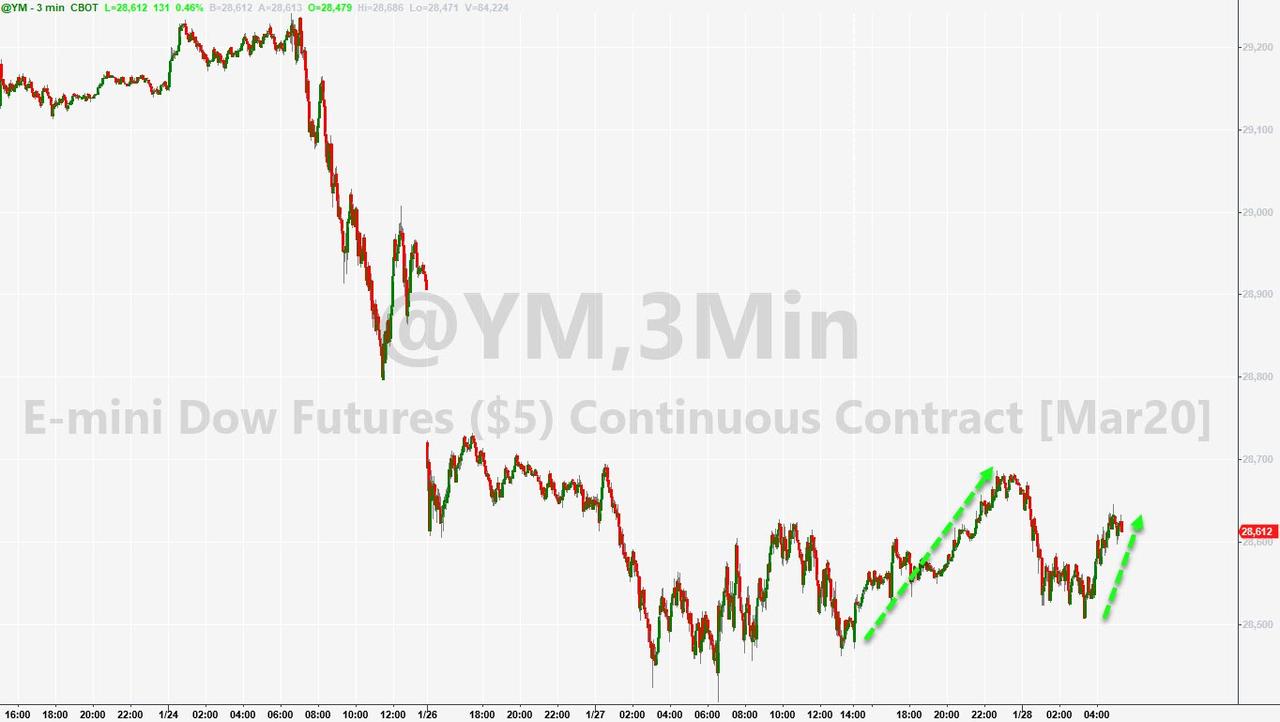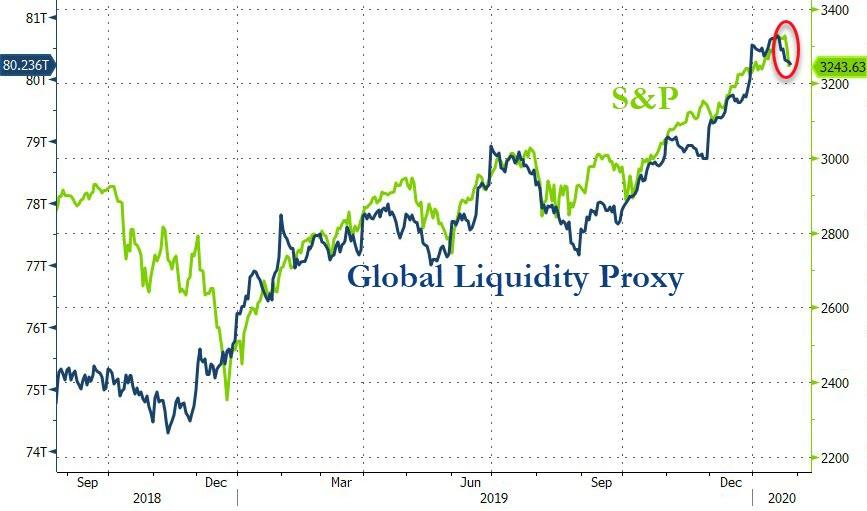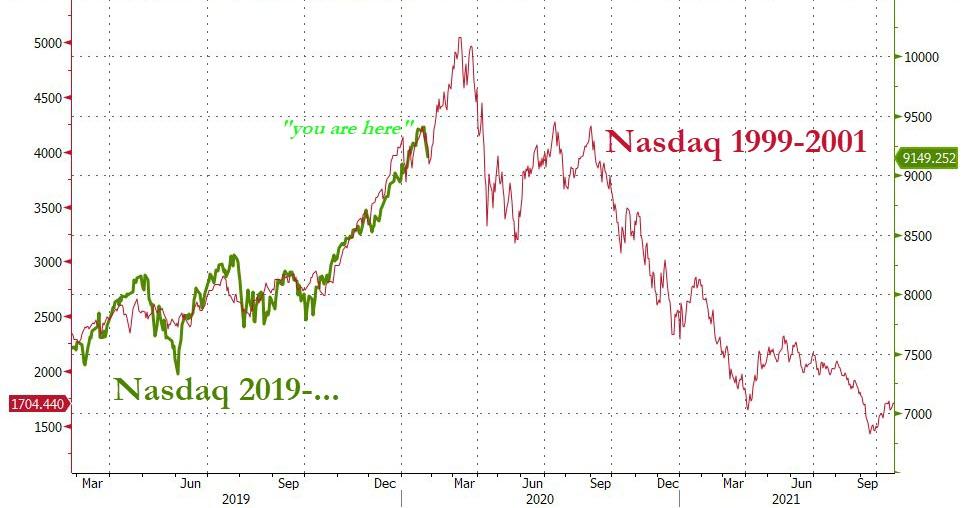‘Sacrilegious’ Trader Warns “Not All Problems Can Be Solved With Excess Liquidity”
This morning’s modest rebound in stocks has many proclaiming the worst is over and everything is awesome once again, on the premise that The Fed will soothe all fears with their magical money-printing sentiment savior…
Bloomberg’s Richard Breslow suggests, correctly, that a little more caution is warranted given the off-side positioning, extreme valuation, and unknown unknowns involved – no matter what The Fed promises.
By all accounts the volumes being traded are running at strong levels. Some of that has to do with the Chinese markets being closed and proxy outlets have to be found elsewhere. Obviously portfolios have to be managed. And from the look of things, what appeared to be safely out-of-the-money options that were sold to pick up some “easy” money, in lieu of being able to earn a reasonable level of interest, don’t look quite as benign as before and need to be dealt with. That’s certainly been a driver of the overnight Treasury trade. There are all sorts of reasons to fully justify being active, including the old-fashioned one of trying to make a living.
But, interestingly enough, unlike when the trade headlines where popping up or Christmas was rapidly approaching, there doesn’t seem to be the usual chorus from advice-givers to lay low or avoid being involved altogether. Yet, this should be a much more difficult set of events to navigate than ones we’ve had a lot of practice with. And, unlike the others, we don’t always know what a given development even means. Of course, until investors get back on-side with their positions, we won’t really know what the next stage will look like.
Let’s stipulate that very few of us really have a clear understanding how this will play out and whether there will be lasting ramifications. Turning this into an exercise of equity sector rotation isn’t nearly as straightforward as it seems and may need to be unwound just as fast as it was implemented. But it’s what we do. Just keep in mind that every market gyration doesn’t imply that the trader or algorithm has a useful new insight.
The time of year is probably a factor. It’s harder to justify shutting up shop in January than December. And, it may not seem like it, as traders are spending a lot of time discussing what is a safe haven or not and risk-off was certainly the order of the day on Monday, but greed remains as much on people’s minds as fear. As ugly as is the news on the ground, investors are of the mindset to be looking for the renewed rally they are still sure will be coming.
The expectation that, if need be, the central banks will jump into the fray, is just too ingrained in our own reaction functions to be ignored. And that clearly affects investor behavior. Futures are moving toward greater and sooner potential cuts. Frankly, it strikes me as a dangerous game. At the risk of being accused as sacrilegious, not all problems can be solved by expediting some additional liquidity.
Negative rates won’t cause quarantined people to run out and spend. No matter what the theory says. But they very well might decide that increased saving is prudent.
Is this the dip for buying (like in 2000)?
There is little question, nor should there be, that the virus outbreak is the lead story driving markets and the news. But it’s worth keeping in mind that it isn’t the only one. Just make sure you don’t attribute absolutely everything that happens to some new development that you can’t find.
Tyler Durden
Tue, 01/28/2020 – 10:15
via ZeroHedge News https://ift.tt/38JkIMm Tyler Durden


